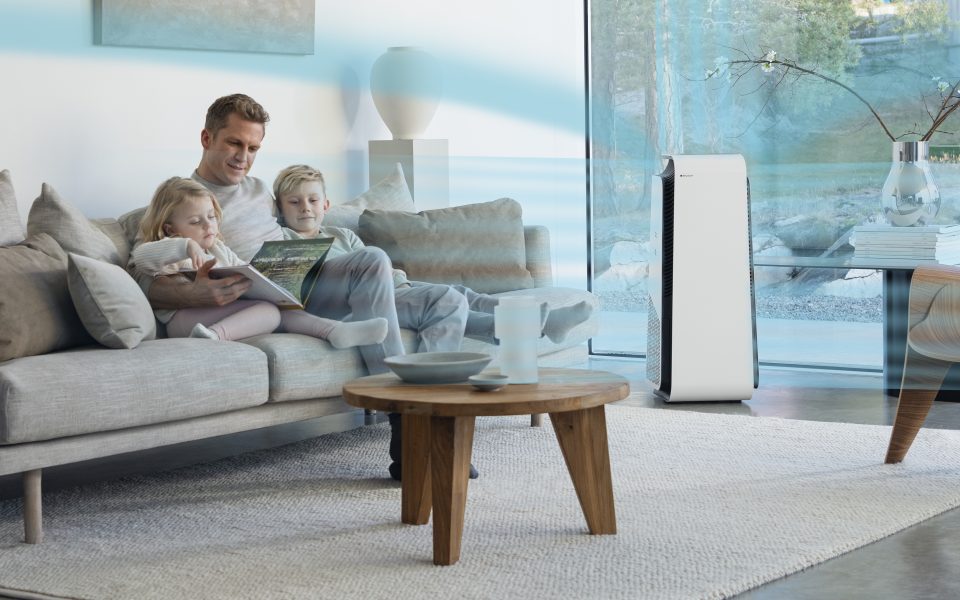Is Disinfection the Key?
Our daily activities used to comprise of getting ready in the morning for work, heading to the office using various transportation modes, sitting for hours and hours in an office or a meeting, then travelling back home or heading out for some entertainment. Nowadays, we do everything indoors, at home.
The occasional trips to our favourite restaurants, cafes, cinemas, and shopping centres still exist in our lives, but they depend on the constant evaluation and regulations put in place by the government. We’re now in an age where almost everything – payments, menus, shopping, etc. – is now contactless and accessible online. Moreover, disinfectants are sprayed on all surface areas and hand sanitisers are always in our bags while as well as being provided in public areas when washbasins aren’t around.
We feel a sense of security and relief from taking precautions and following the health protocols because we’re taking actions to minimise our exposure from others and most importantly, COVID-19. What if you were told this is all an illusion?
The lowest risk of transmitting COVID-19 is through fomites, which is the transmission that occurs due to touching objects or surfaces contaminated with the virus by an infected person. The World Health Organisation (WHO) wrote that the “Three Cs”; crowded places, close-contact settings – especially where people have conversations very near each other – and confined and enclosed spaces with poor ventilation are the settings where the COVID-19 virus spreads most easily, especially when two or three of these criteria overlap.
However, cleaning efforts are often focussed on disinfecting the surface, meaning its effects are merely temporary. Excessive disinfectant usage leaves behind residue, causing harmful side effects to the health, such as triggering irritation, causing odour, and interfering with breathing.
Few people know with any certainty whether they’re positive or negative for COVID-19 on a daily basis – unless they have an at-home test, but that in itself isn’t 100 percent reliable. When a surface or room is contaminated by an infected person after the disinfection process is complete, the risk of transmission returns and the effect of the disinfectant is no longer valid.
Quoted from The Washington Post, “the Centers for Disease Control and Prevention (CDC) in April 2021 said that contact with a contaminated surface has less than a one in 10,000 chance of causing an infection — a smidgen higher than a person’s lifetime chance of being struck by lightning.”
Now, imagine going to a new dinner spot where you see the tables and chairs are disinfected before you’re seated comfortably and place your order. As you’re getting ready to eat, alcohol-based cleaning fluids for cutlery are often distributed by the waiter. Instead of cleaning, however, the chemical residue left on the cutlery enters your body and becomes dangerous to your health. Eventually, you’ll remove your mask to eat and chit-chat the night away. This becomes dangerous; people are careless and the risk of transmission through droplets and aerosols are highly possible.
This illusion, as noted earlier, is hygiene theatre. The Atlantic explained that hygienic measures actually don’t have the effect of preventing the transmission of COVID-19. In other words, hygiene theatre offers little prevention against the coronavirus except to simply make everyone less anxious by creating an illusion of a sense of security that can instead cause harm or even make one careless.
UBC Clinical Psychologist Steven Taylor concurred that hygiene theatre still has value to create calmness. “While erring on the side of caution isn’t a bad thing, there are drawbacks if you take it to the extreme,” reported the Canadian news portal City News 1130. “Going overboard with the cleaning, that’s disruptive and expensive. Those resources could be spent on better things.”
Since science declares otherwise, how can we take the right precautions?
Don’t stop using disinfectants altogether. Use them correctly to periodically clean surfaces that are more at risk such as doorknobs, elevator buttons, or light switches. While on a personal level, adhere to the mandatory health protocols, namely wearing masks, keeping a distance, and washing hands.
Take it up another notch by maintaining good and clean air quality from viruses and pollution. The use of indoor air purifiers, whether at home, in the office, or in public areas, is the most adequate form of anticipating virus transmission through aerosol transmission – remember WHO’s Three Cs?
The CDC recommends the use of air purifiers for closed rooms with capacity per the volume of the room, namely by matching the value of clean air produced (CADR) from AHAM. Combined with wearing a mask, turning on an air purifier in a closed room can reduce the risk of transmission by up to 90 percent.
Director of PT Higienis Indonesia; distributor of air purification systems, Blueair and Stadler Form, Justi Salusiana explained that any situation in which people are in close proximity to one another for long periods increases the risk of transmission.
“More and more studies point to airborne transmission, either via droplets or aerosols, as the main channel of transmission,
Indoor locations, where there is poor ventilation, are riskier than outdoors. Activities where more particles are expelled from the mouth, such as singing or breathing heavily during exercise, also increase the risk of transmission,” she continued.
The CDC and many other studies have estimated that about 50 percent of people living with someone who has COVID-19 will be infected — usually in less than five days, if no intervention, for example, self-isolation is taken.
Justi went on to emphasise that we should not neglect that air pollution, especially in big cities like Jakarta, is a serious problem affecting our health and wellbeing. “While the focus is mostly on virus filtration during the pandemic, the benefits of using an air purifier, therefore, go beyond,” she said.
Make sure you are using an air purifier with honest and reliable information. “Logically, we have to reduce the virus concentration in closed rooms or any indoor settings. Through ventilation, fresh air enters to ‘dilute’ the concentration level, or to reduce it by filtering the air with a quality air purifier that is equipped with efficient filter as well as able to produce high CADR,” concluded Justi.
Aside from helping to reduce transmission potential, taking these measures also protect ourselves and our families. We may be unable to control air circulation in public areas, but starting from home is better than nothing.




